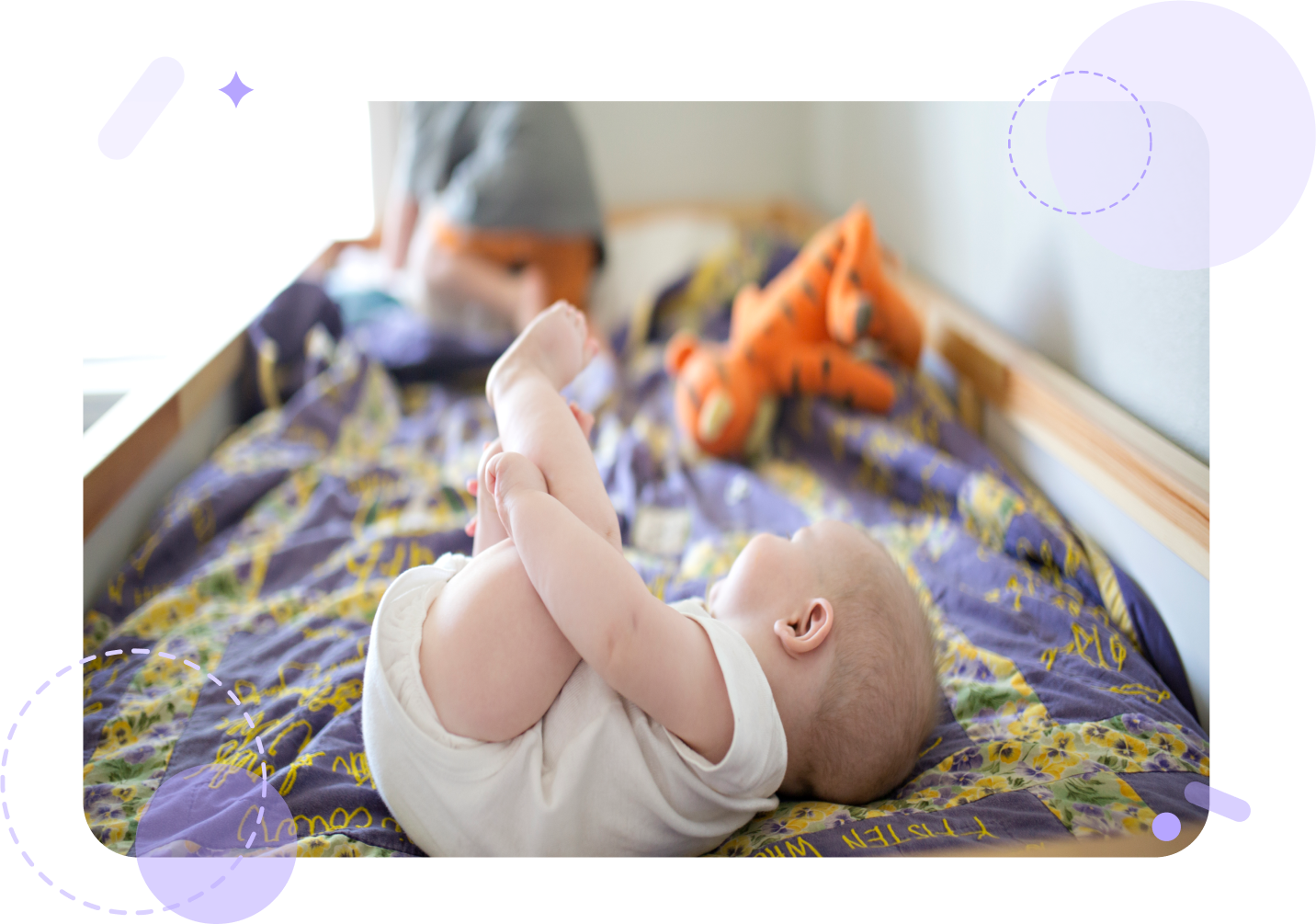
While a baby able to roll over is an important developmental milestone, it also means pretty much gluing your eyes to the little one. Like every new skill, when babies discover their ability to roll, they will put it to practice; a lot. So, make sure to provide a safe space for your baby to get rolling.
Learning How to Roll
When your little one reaches the 5-month mark, they begin to grow, strengthen, and coordinate the muscles in their arms, legs, and neck rapidly. Whether it’s kicking and flailing their arms and legs while you hold them or lifting their chest and head during tummy time, you’ll notice these movements actively develop their muscular capabilities. In time, all that exercise translates to movements like rolling over, sitting up, scooting about, and eventually walking!
When Does A Baby Start Rolling?
By six months old, your baby can control all these muscle groups, albeit imperfectly. Closer to 9 months old, your little one will show improved movements in their upper body, whether in terms of head or trunk movement. You can see your baby begin perfecting the complete roll around this time frame – allowing them to roll back to front and vice versa.
Controlled Movements
Rolling over demands a great deal of physical power from your baby. Given the coordination, head control, and muscular strength required to roll over, it takes plenty of time and practice for your baby to refine and fully master their rolling technique.
More controlled movements when rolling or maintaining balance while sitting is a sure sign of your baby’s incredible sensory-motor development, enabling them to move and interact with the world more independently.
Don’t be too alarmed if your baby doesn’t roll over completely yet, as each baby follows a slightly different trajectory for development. Some infants skip rolling over altogether and move straight into sitting, scooting, or crawling. So long as your baby is making strides toward movement and appears eager to explore their space physically, you likely have nothing to worry about. As always, speak to your baby’s pediatrician about any concerns.
 Back
Back

